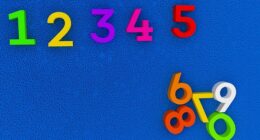Inverse refers to the opposite or reverse of something, while reciprocal refers to a quantity that, when multiplied by a given quantity, results in a product of one. In mathematical terms, the inverse of a number is obtained by dividing 1 by that number, while the reciprocal is obtained by taking the multiplicative inverse of that number.
What is inverse?
(Photo by Marisa Harris on Unsplash )

The inverse is the opposite or reverse of something. In mathematics, the inverse of a number or operation is a quantity that, when combined with the original number or operation, results in a specific outcome. For example, the inverse of addition is subtraction, and the inverse of multiplication is division. Inverse operations are used in algebra to solve equations and find unknown variables.
What is reciprocal?
(Photo by Gayatri Malhotra on Unsplash )

Reciprocal refers to a quantity that, when multiplied by a given quantity, results in a product of one. In mathematics, the reciprocal of a number is obtained by taking the multiplicative inverse of that number. For example, the reciprocal of 2 is 1/2, because 2 multiplied by 1/2 equals 1. Reciprocals are used in various mathematical applications, including fraction simplification, finding unknown variables, and solving equations.
Inverse Vs. Reciprocal – Key difference
The key difference between inverse and reciprocal is that inverse refers to the opposite or reverse of something, while reciprocal refers to a quantity that, when multiplied by a given quantity, results in a product of one.
In mathematical terms, the inverse of a number or operation is a quantity that, when combined with the original number or operation, results in a specific outcome. On the other hand, the reciprocal of a number is obtained by taking the multiplicative inverse of that number. Therefore, while inverse is a more general term that can refer to different types of opposites or reversals, reciprocal specifically refers to the multiplicative inverse of a number.
Reciprocal simply means “the number you get when you divide 1 by x”. So, the reciprocal of 4 is 1/4, the reciprocal of 0.5 is 2 and the reciprocal of 10 is 1/10.
Inverse, on the other hand, means “the number you get when you raise x to the power of -1”. So, the inverse of 4 is 1/4 (or 0.25), the inverse of 0.5 is 2 (or 1/0.5) and the inverse of 10 is 1/10 (or 0.1).
How to calculate inverse and reciprocal
In mathematics, the inverse of a number is its reciprocal. The reciprocal of a number is its multiplicative inverse, which is the number multiplied by itself to produce 1. For example, the reciprocal of 5 is 1/5 because 5 × 1/5 = 1. The reciprocal of a fraction is the fraction flipped upside down, such as when we turn 2/3 upside down to get 3/2. In general, the reciprocal of x is 1/x.
We can calculate the inverse of a number by using the formula x^-1 = 1/x. For example, if we want to find the inverse of 5, we would use the formula 5^-1 = 1/5 and calculate that 5^-1 = 0.2. Similarly, if we want to find the inverse of 2/3, we would use the formula (2/3)^-1 = 3/2 and calculate that (2/3)^-1 = 1.5.
What are the applications of inverse and reciprocal?
As we have seen, the inverse of a number is its reciprocal. The reciprocal of a number is the number that, when multiplied by the original number, results in 1. The applications of these two concepts are very similar, and they are often used interchangeably.
Inverse functions are used in many mathematical calculations, especially in calculus. For example, when finding the derivative of a function, we often need to use the inverse function to simplify the equation. The reciprocal is also used extensively in mathematical calculations, particularly in algebra and geometry.
There are also many real-world applications for inverse and reciprocal functions. In physics, for example, the inverse square law is used to calculate the force of gravity between two objects. In chemistry, the concept of molarity (the number of moles per liter) is calculated using the reciprocal relationship between volume and concentration. In business and economics, price elasticity (the responsiveness of demand to changes in price) is often calculated using the inverse relationship between price and quantity demanded.
What is the difference between reciprocal and inverse proportion?
Reciprocal proportion is when two variables are inversely related, meaning that as one variable increases, the other decreases. Inverse proportion is when two variables are directly related, meaning that as one variable increases, the other also increases. The main difference between reciprocal and inverse proportion is that reciprocal proportion results in a constant ratio while inverse proportion results in a changing ratio.
What is the difference between inverse and reciprocal in trigonometry?
Inverse and reciprocal are two terms that are often used interchangeably, but there is a difference between the two. Inverse means to take the inverse of a number, while reciprocal means to take the number’s reciprocal.
To find the inverse of a number, you need to use a mathematical process called “inversion.” In inversion, you take a number and raise it to the power of -1. For example, the inverse of 2 would be 2^-1, or 1/2. The inverse of 3 would be 3^-1, or 1/3.
Reciprocal just means taking the number’s reciprocal. The reciprocal of 2 would be 1/2, and the reciprocal of 3 would be 1/3. So, basically, when you take the reciprocal of a number, you’re just flipping it upside down.
What is the difference between reciprocal functions and inverse functions?
Reciprocal functions and inverse functions are two types of mathematical operations that are related but have different definitions.
A reciprocal function is defined as a function that produces the multiplicative inverse of its argument. In other words, if a function f(x) is reciprocal, then f(x)*f(y)=1 whenever x and y are nonzero. For example, the reciprocal function of 2 is 1/2.
An inverse function is a function that “undoes” another function. In other words, if a function f(x) has an inverse, then applying both f(x) and its inverse to a value will result in the original value. For example, the inverse of the square root function is the squaring function; taking the square root of a number and then squaring it will give you back the original number.
What are example of inverse?
In mathematics, a multiplicative inverse or reciprocal for a number x, denoted by 1/x or x^{-1}, is a number which when multiplied by x produces the multiplicative identity, 1. The multiplicative inverse of a fraction a/b is b/a. For the multiplicative inverse of a real number, divide 1 by the number. For example, the reciprocal of 5 is one fifth (1/5 or 0.2), and the reciprocal of 0.25 is 4 (1/0.25 or 4).
What are example of reciprocal?
There are many examples of reciprocals in mathematics and in everyday life. Some examples of reciprocals in mathematics include:
1/4 is the reciprocal of 4 because 1/4 x 4 = 1
2/9 is the reciprocal of 9 because 2/9 x 9 = 2
3/16 is the reciprocal of 16 because 3/16 x 16 = 3
In everyday life, we often use reciprocals when we’re talking about exchanging things. For example, if you trade your friend a piece of candy for a pencil, the reciprocal would be your friend trading you a pencil for a piece of candy. Another example of a reciprocal relationship is between two friends who agree to do each other’s chores for a week.
Featured Image By – Paulo Zamora on Unsplash









